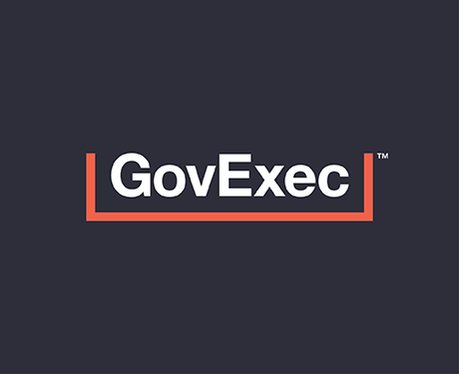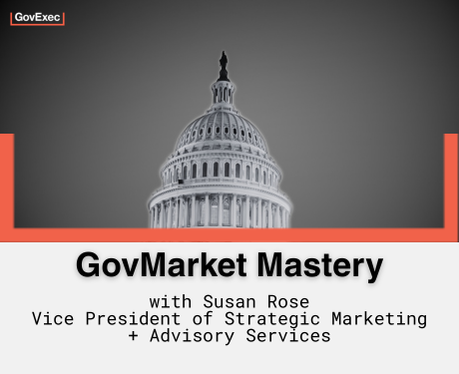Government marketers are in a unique position as they navigate the evolving landscape inclusive of an economic downturn, ever-present workforce challenges, and other trends impacting the public sector. Consequently, effective marketing strategies have never been more important to make every dollar go further. That’s why GovExec assembled a team of experts to share the top five marketing strategies to set you up for success in 2023. In this five part blog series, you will learn about utilizing insights, digital products, content, and events in a holistic B2G marketing strategy.
Our second strategy of this series comes from Aaron Heffron, President of Research and Forecasting at GovExec. Heffron oversees the primary gathering of research and insights from customers, clients, and prospects, as well as analyzing and interpreting that information for clients to use as they move forward into the market.
Strategy #2: Gather information to educate your customers AND yourself.
Often, mandates come from the top to chase money and opportunities full steam without a clear plan. Money and time is subsequently wasted in this “ready, fire, aim” approach, as Heffron calls it. Analyzing data and insights after the fact is helpful to learn about your current customers, but before you rush into any campaign, you need to do your homework. Research the pain points and challenges of customers and prospects. What keeps them up at night? These will differ not only agency to agency, but also internally, from one position to the next. Depending on a person’s role in the agency, they may be thinking of solutions from a big picture perspective, or a more nuanced and technical perspective. You also want to understand the language they use and shape your materials around that. If you know what they are struggling with and how they talk about it, you stand a much better chance at having a successful campaign. Take some extra time to systematically gather information from your target audiences before you roll something out.
“It’s very important to go out ahead of time and understand the pain points of those customers, understand how they’re talking, what language they use, and really go forward with your materials in that way.”
-Aaron Heffron, President of Research and Forecasting
You don’t want to spend all of your time making a plethora of content. Heffron suggests you C.O.P.E. (Create Once Play Everywhere). While you are learning more about your target audience, repurpose some of those findings to develop a tree full of data points and useful information nuggets to disperse in different formats, like presentations, blog posts, meetings, speaking points at conferences, whitepapers, and other collateral. The information tree can feed all of it if gathered correctly, and having varied formats helps to meet people where they are no matter their habits or learning styles.
“Create one repository of information, of data, of pain points, of findings, and then just pick at that tree of knowledge the whole time and feed it out to the people in different formats.”
-Aaron Heffron, President of Research and Forecasting
Understand the personas of your customers and where they are in the decision-making journey. Align your marketing and outreach efforts to the particular stage in their journey so that it’s relevant and delivered at the right moment. Market Connections created a report that defined what information individuals need at each stage. They found that in the beginning, information should be relatively vendor-agnostic and solution-focused, but not a specific branded solution. As prospects move through the process and develop specifications, you can begin to include brand-specific solutions. Each client will need different things throughout the process, so tracking their journey is crucial. Contracts have 24 to 36 month lead times before an RFP is even dropped (if you’re at the RFP, you’ve already missed the boat). If you understand the 24 to 36 month journey and the personas of the customers, you can supply the right information to the right people at the right time.
“If you start at 24 to 36 months understanding that journey, then you can feed the marketing materials, the information that’s needed, to the right people at the right times. But it’s important to know who those people are and what those right times are.”
-Aaron Heffron, President of Research and Forecasting
This information is all well and good for marketers with the resources to gather this data, but could pose a problem for those coming from grassroots organizations and budgets. If this sounds like you, you may be wondering where you can go to get these types of insights. Heffron suggests marketers look out for interviews and public statements from department and agency leads. Set up alerts and read through them on a daily basis. Interviews and presentations at conferences can tell you what the client needs, where they are headed, and where they are, straight from their own mouth. You can also task your sales and business development teams to gather and document information from customers and prospects. Create a mechanism to make it as easy as possible for them to relay the information back to you. Also, if you are embedded in an agency, talk to the program managers and people onsite to get their perspectives on what’s happening, what language they’re using, and what the tone is like. Finally, Annual Strategic Plans are a great resource to get to know your customer or prospect. Each of these steps can provide key insights for your marketing strategy. Just don’t wait until the last minute!
Find our first strategy on leading with data-driven content here.
Can’t wait for the next post in this series?
Our experts broke it all down for you in this free webinar:
Top 5 Marketing Strategies for Success in 2023.
Register today and access it on-demand!


